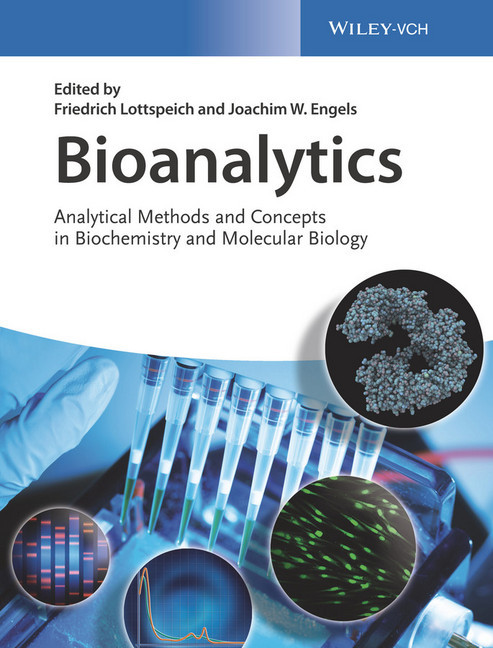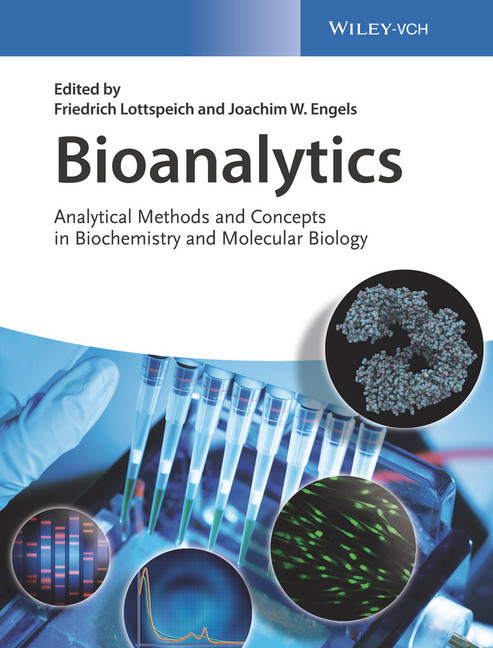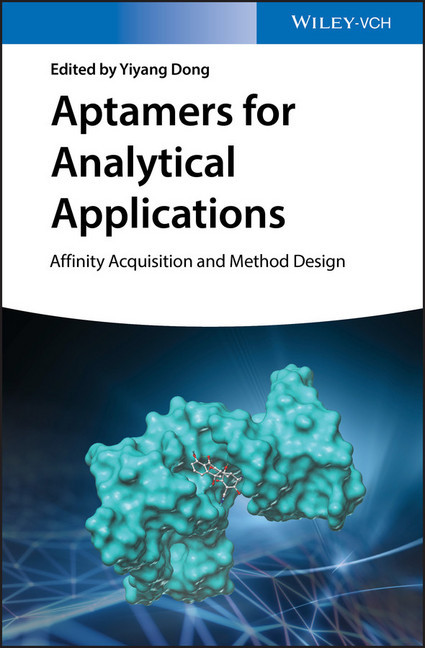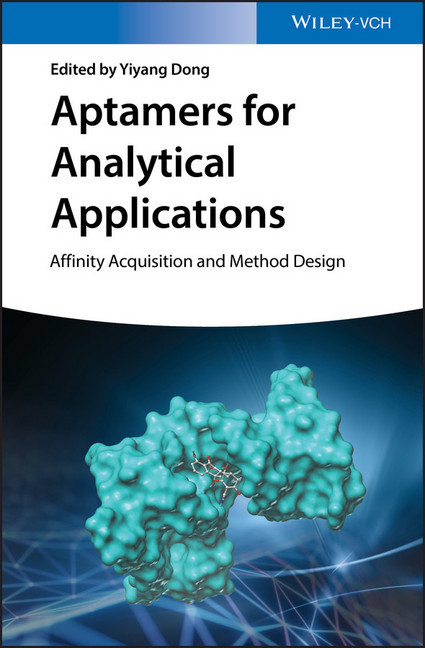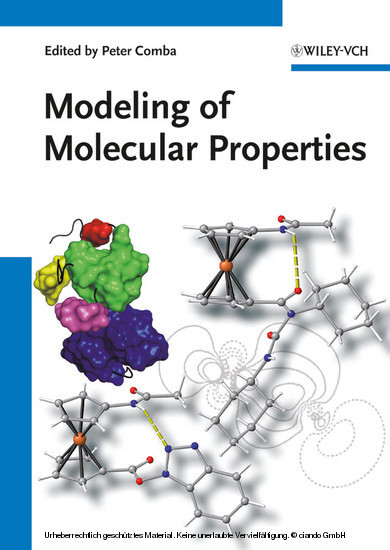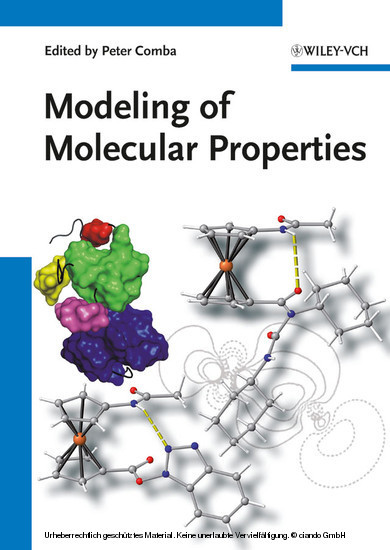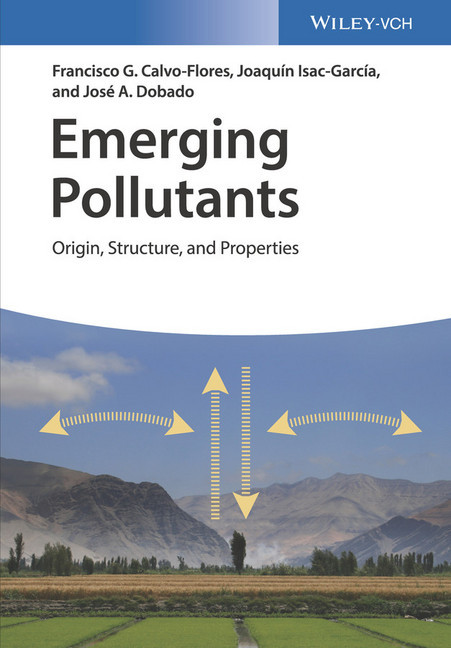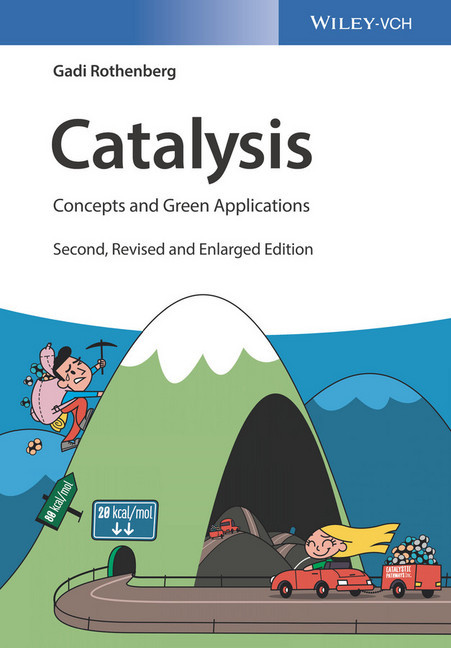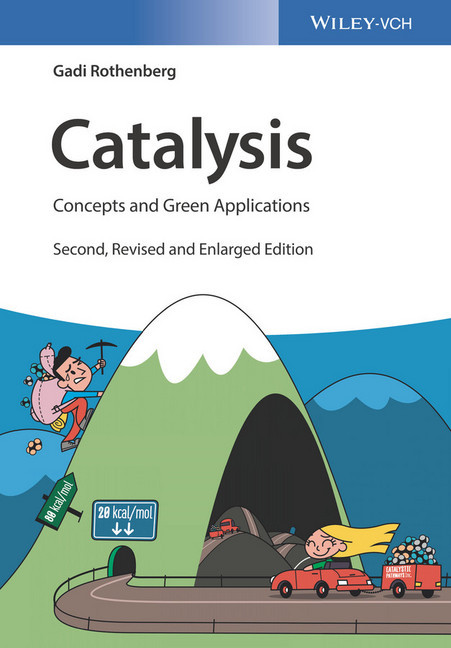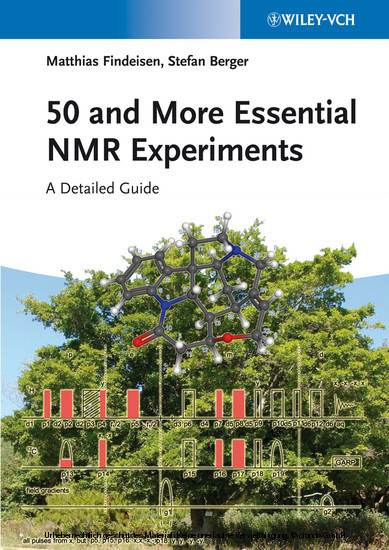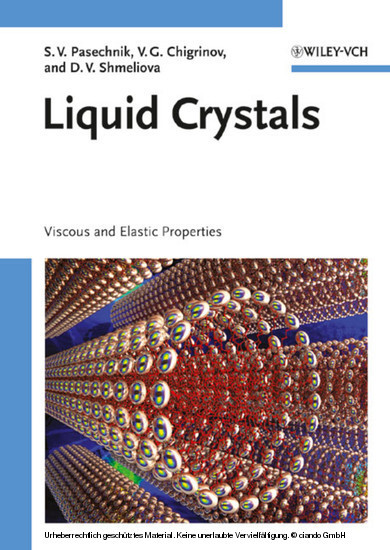Bioanalytics
Analytical Methods and Concepts in Biochemistry and Molecular Biology
Analytical methods are the essential enabling tools of the modern biosciences. This book presents a comprehensive introduction into these analytical methods, including their physical and chemical backgrounds, as well as a discussion of the strengths and weakness of each method. It covers all major techniques for the determination and experimental analysis of biological macromolecules, including proteins, carbohydrates, lipids and nucleic acids.
The presentation includes frequent cross-references in order to highlight the many connections between different techniques. The book provides a bird's eye view of the entire subject and enables the reader to select the most appropriate method for any given bioanalytical challenge. This makes the book a handy resource for students and researchers in setting up and evaluating experimental research. The depth of the analysis and the comprehensive nature of the coverage mean that there is also a great deal of new material, even for experienced experimentalists.
The following techniques are covered in detail:
- Purification and determination of proteins
- Measuring enzymatic activity
- Microcalorimetry
- Immunoassays, affinity chromatography and other immunological methods
- Cross-linking, cleavage, and chemical modification of proteins
- Light microscopy, electron microscopy and atomic force microscopy
- Chromatographic and electrophoretic techniques
- Protein sequence and composition analysis
- Mass spectrometry methods
- Measuring protein-protein interactions
- Biosensors
- NMR and EPR of biomolecules
- Electron microscopy and X-ray structure analysis
- Carbohydrate and lipid analysis
- Analysis of posttranslational modifications
- Isolation and determination of nucleic acids
- DNA hybridization techniques
- Polymerase chain reaction techniques
- Protein sequence and composition analysis
- DNA sequence and epigenetic modification analysis
- Analysis of protein-nucleic acid interactions
- Analysis of sequence data
- Proteomics, metabolomics, peptidomics and toponomics
- Chemical biology
Friedrich Lottspeich studied chemistry in Vienna and performed his dissertation at the Max-Planck Institute of Biochemistry in Munich. He received his PhD in biochemistry from the University of Vienna. After habilitation in Munich and Innsbruck, Friedrich Lottspeich was head of the protein analytics group at the Max-Planck Institute of Biochemistry in Munich until his retirement in 2013. His research focused on the development and application of methods for the analysis of proteins. Friedrich Lottspeich is author of more than 750 original publications and is a former President of EUPA and DGPF. He received several international prizes such as the ASAC Pregl Medal 2009, the DGMS Award Mass spectrometry in Life Sciences 2012, the AUPA Life Achievement Award 2014 and the EUPA Juan Pablo Albar Proteomics Award 2016.
Joachim W. Engels studied chemistry in Berlin and Munich and received a Ph.D. in Regensburg. He carried out post-doctoral studies at Stanford, did his habilitation in Konstanz and was a visiting scientist at the University of Colorado before joining the company Hoechst in 1981, where he developed gene synthesis. He is a full Professor of Biological Chemistry at the Goethe-University of Frankfurt since 1985. His interests range from chemical biology to bioanalytics. Joachim Engels has served as president of the International Society of Nucleotides and Nucleic Acids (2005/6), held several guest professorships at Chiba Institute, Japan (1989), Hokkaido University, Japan (1998) Shandong University, China (2004), Cady-Ayyad University, Morocco (2010), University Witwatersrand, South Africa (2012). He has authored more than 300 original publications. On retirement, he was chosen Professor Emeritus and he is now President of the Goethe-Wissenschaftliche Gesellschaft (Academy) in Frankfurt.
The presentation includes frequent cross-references in order to highlight the many connections between different techniques. The book provides a bird's eye view of the entire subject and enables the reader to select the most appropriate method for any given bioanalytical challenge. This makes the book a handy resource for students and researchers in setting up and evaluating experimental research. The depth of the analysis and the comprehensive nature of the coverage mean that there is also a great deal of new material, even for experienced experimentalists.
The following techniques are covered in detail:
- Purification and determination of proteins
- Measuring enzymatic activity
- Microcalorimetry
- Immunoassays, affinity chromatography and other immunological methods
- Cross-linking, cleavage, and chemical modification of proteins
- Light microscopy, electron microscopy and atomic force microscopy
- Chromatographic and electrophoretic techniques
- Protein sequence and composition analysis
- Mass spectrometry methods
- Measuring protein-protein interactions
- Biosensors
- NMR and EPR of biomolecules
- Electron microscopy and X-ray structure analysis
- Carbohydrate and lipid analysis
- Analysis of posttranslational modifications
- Isolation and determination of nucleic acids
- DNA hybridization techniques
- Polymerase chain reaction techniques
- Protein sequence and composition analysis
- DNA sequence and epigenetic modification analysis
- Analysis of protein-nucleic acid interactions
- Analysis of sequence data
- Proteomics, metabolomics, peptidomics and toponomics
- Chemical biology
Friedrich Lottspeich studied chemistry in Vienna and performed his dissertation at the Max-Planck Institute of Biochemistry in Munich. He received his PhD in biochemistry from the University of Vienna. After habilitation in Munich and Innsbruck, Friedrich Lottspeich was head of the protein analytics group at the Max-Planck Institute of Biochemistry in Munich until his retirement in 2013. His research focused on the development and application of methods for the analysis of proteins. Friedrich Lottspeich is author of more than 750 original publications and is a former President of EUPA and DGPF. He received several international prizes such as the ASAC Pregl Medal 2009, the DGMS Award Mass spectrometry in Life Sciences 2012, the AUPA Life Achievement Award 2014 and the EUPA Juan Pablo Albar Proteomics Award 2016.
Joachim W. Engels studied chemistry in Berlin and Munich and received a Ph.D. in Regensburg. He carried out post-doctoral studies at Stanford, did his habilitation in Konstanz and was a visiting scientist at the University of Colorado before joining the company Hoechst in 1981, where he developed gene synthesis. He is a full Professor of Biological Chemistry at the Goethe-University of Frankfurt since 1985. His interests range from chemical biology to bioanalytics. Joachim Engels has served as president of the International Society of Nucleotides and Nucleic Acids (2005/6), held several guest professorships at Chiba Institute, Japan (1989), Hokkaido University, Japan (1998) Shandong University, China (2004), Cady-Ayyad University, Morocco (2010), University Witwatersrand, South Africa (2012). He has authored more than 300 original publications. On retirement, he was chosen Professor Emeritus and he is now President of the Goethe-Wissenschaftliche Gesellschaft (Academy) in Frankfurt.
1;Bioanalytics: Analytical Methods and Concepts in Biochemistry and Molecular Biology;1 2;Table of Contents;7 3;Preface;17 4;Introduction: Bioanalytics - a Science in its Own Right;21 5;Part I: Protein Analytics;27 5.1;Chapter 1: Protein Purification;29 5.1.1;1.1 Properties of Proteins;29 5.1.2;1.2 Protein Localization and Purification Strategy;32 5.1.3;1.3 Homogenization and Cell Disruption;33 5.1.4;1.4 Precipitation;35 5.1.5;1.5 Centrifugation;37 5.1.5.1;1.5.1 Basic Principles;38 5.1.5.2;1.5.2 Centrifugation Techniques;38 5.1.6;1.6 Removal of Salts and Hydrophilic Contaminants;41 5.1.7;1.7 Concentration;43 5.1.8;1.8 Detergents and their Removal;44 5.1.8.1;1.8.1 Properties of Detergents;44 5.1.8.2;1.8.2 Removal of Detergents;46 5.1.9;1.9 Sample Preparation for Proteome Analysis;48 5.1.10;Further Reading;48 5.2;Chapter 2: Protein determination;49 5.2.1;2.1 Quantitative Determination by Staining Tests;51 5.2.1.1;2.1.1 Biuret Assay;52 5.2.1.2;2.1.2 Lowry Assay;52 5.2.1.3;2.1.3 Bicinchoninic Acid Assay (BCA Assay);53 5.2.1.4;2.1.4 Bradford Assay;54 5.2.2;2.2 Spectroscopic Methods;54 5.2.2.1;2.2.1 Measurements in the UV Range;55 5.2.2.2;2.2.2 Fluorescence Method;57 5.2.3;2.3 Radioactive Labeling of Peptides and Proteins;57 5.2.3.1;2.3.1 Iodinations;59 5.2.4;Further Reading;59 5.3;Chapter 3: Enzyme Activity Testing;61 5.3.1;3.1 The Driving Force behind Chemical Reactions;61 5.3.2;3.2 Rate of Chemical Reactions;62 5.3.3;3.3 Catalysts;63 5.3.4;3.4 Enzymes as Catalysts;63 5.3.5;3.5 Rate of Enzyme-Controlled Reactions;64 5.3.6;3.6 Michaelis-Menten Theory;64 5.3.7;3.7 Determination of Km and Vmax;65 5.3.8;3.8 Inhibitors;66 5.3.8.1;3.8.1 Competitive Inhibitors;66 5.3.8.2;3.8.2 Non-competitive Inhibitors;67 5.3.9;3.9 Test System Set-up;67 5.3.9.1;3.9.1 Analysis of the Physiological Function;68 5.3.9.2;3.9.2 Selecting the Substrates;68 5.3.9.3;3.9.3 Detection System;68 5.3.9.4;3.9.4 Time Dependence;69 5.3.9.5;3.9.5 pH Value;69 5.3.9.6;3.9.6 Selecting the Buffer Substance and the Ionic Strength;69 5.3.9.7;3.9.7 Temperature;70 5.3.9.8;3.9.8 Substrate Concentration;70 5.3.9.9;3.9.9 Controls;71 5.3.10;Further Reading;71 5.4;Chapter 4: Microcalorimetry;73 5.4.1;4.1 Differential Scanning Calorimetry (DSC);74 5.4.2;4.2 Isothermal Titration Calorimetry (ITC);80 5.4.2.1;4.2.1 Ligand Binding to Proteins;80 5.4.2.2;4.2.2 Binding of Molecules to Membranes: Insertion and Peripheral Binding;84 5.4.3;4.3 Pressure Perturbation Calorimetry (PPC);87 5.4.4;Further Reading;88 5.5;Chapter 5: Immunological Techniques;89 5.5.1;5.1 Antibodies;89 5.5.1.1;5.1.1 Antibodies and Immune Defense;89 5.5.1.2;5.1.2 Antibodies as Reagents;90 5.5.1.3;5.1.3 Properties of Antibodies;90 5.5.1.4;5.1.4 Functional Structure of IgG;92 5.5.1.5;5.1.5 Antigen Interaction at the Combining Site;93 5.5.1.6;5.1.6 Handling of Antibodies;94 5.5.2;5.2 Antigens;95 5.5.3;5.3 Antigen-Antibody Reaction;97 5.5.3.1;5.3.1 Immunoagglutination;98 5.5.3.2;5.3.2 Immunoprecipitation;99 5.5.3.3;5.3.3 Immune Binding;110 5.5.4;5.4 Complement Fixation;120 5.5.5;5.5 Methods in Cellular Immunology;121 5.5.6;5.6 Alteration of Biological Functions;123 5.5.7;5.7 Production of Antibodies;124 5.5.7.1;5.7.1 Types of Antibodies;124 5.5.7.2;5.7.2 New Antibody Techniques (Antibody Engineering);125 5.5.7.3;5.7.3 Optimized Monoclonal Antibody Constructs with Effector Functions for Therapeutic Application;128 5.5.8;5.8 Outlook: Future Expansion of the Binding Concepts;132 5.5.9;Dedication;132 5.5.10;Further Reading;132 5.6;Chapter 6: Chemical Modification of Proteins and Protein Complexes;133 5.6.1;6.1 Chemical Modification of Protein Functional Groups;134 5.6.2;6.2 Modification as a Means to Introduce Reporter Groups;142 5.6.2.1;6.2.1 Investigation with Naturally Occurring Proteins;142 5.6.2.2;6.2.2 Investigation of Recombinant and Mutated Proteins;146 5.6.3;6.3 Protein Crosslinking for the Analysis of Protein Interaction;147 5.6.3.1;6.3.1 Bifunctional Reagents;147 5.6.3.2;6.3.2 Photoaffinity Labeling;147 5.6.4;Further
Lottspeich, Friedrich
Engels, Joachim
| ISBN | 9783527694440 |
|---|---|
| Artikelnummer | 9783527694440 |
| Medientyp | E-Book - PDF |
| Copyrightjahr | 2018 |
| Verlag | Wiley |
| Umfang | 1137 Seiten |
| Sprache | Englisch |
| Kopierschutz | Adobe DRM |

